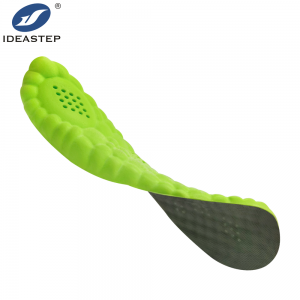
Choosing the right insoles with good breathability is essential for maintaining comfort and foot health. Breathable insoles can help manage moisture, reduce the risk of foot odor, and promote a healthier environment for the feet. In this article, we will explore various materials known for their excellent breathability and their suitability for insole construction.
1. Porous Foam Materials
Porous foam materials, such as open-cell polyurethane foam and latex foam, are known for their exceptional breathability. These materials feature a network of interconnected air pockets that allow for efficient air circulation, helping to keep the feet cool and dry. Insoles made from porous foam materials are often lightweight and provide good shock absorption, making them suitable for athletic and everyday footwear.
2. Natural Fibers
Natural fibers, including cotton, wool, and bamboo, are prized for their breathability and moisture-wicking properties. Cotton insoles, in particular, are soft, absorbent, and allow for air to pass through. Making them a popular choice for individuals seeking breathable and comfortable insoles. Wool and bamboo fibers are also valued for their natural breathability and ability to manage moisture effectively.
3. Mesh and Spacer Fabrics
Mesh and spacer fabrics are engineered to facilitate airflow and ventilation. These materials are commonly used in the upper layers of insoles to promote breathability. Spacer fabrics, in particular, feature a three-dimensional structure that creates air gaps, allowing for enhanced breathability and moisture management.
4. Microfiber and Synthetic Mesh
Microfiber materials and synthetic mesh are often utilized in high-performance insoles designed for athletic and active use. These materials offer excellent breathability, moisture-wicking capabilities, and quick drying properties. Insoles featuring microfiber and synthetic mesh are suitable for individuals who engage in rigorous physical activities and require optimal ventilation for their feet.
5. Perforated Leather
Perforated leather insoles combine the luxurious feel of leather with enhanced breathability. The presence of perforations in the leather allows for air circulation, making these insoles suitable for dress shoes and formal footwear. Perforated leather insoles offer a balance of breathability, durability, and comfort.
When selecting insoles based on breathability, it is important to consider the specific needs and activities of the wearer. Factors such as foot perspiration, level of physical activity, and the type of footwear in which the insoles will be used should be taken into account. Additionally, it is advisable to look for insoles that feature antimicrobial or odor-controlling properties to maintain a fresh and hygienic environment for the feet.
In conclusion, a wide range of materials, including porous foam, natural fibers, mesh fabrics, microfiber, synthetic mesh, and perforated leather, offer excellent breathability for insole construction. If you are interested in breathable PU insoles, you can continue to visit this page (https://www.aideastep.com/pu-insoles/) and tell us your needs.
